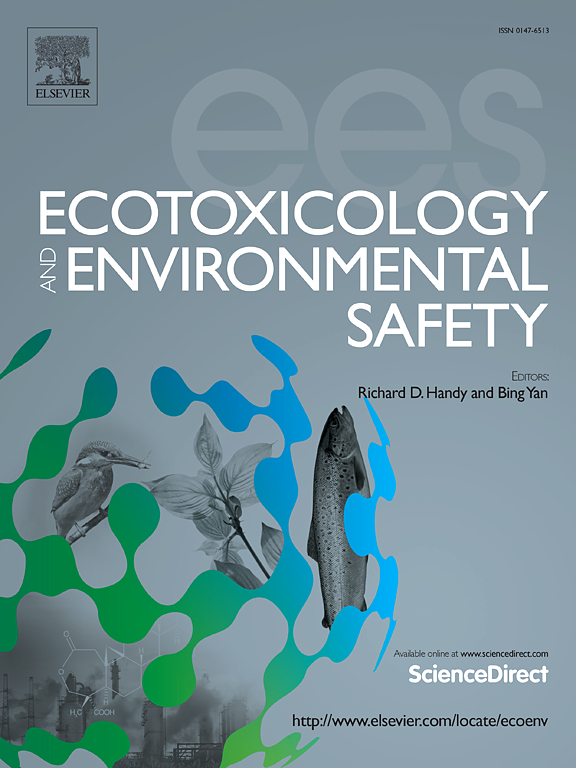Reduction in ambient PM2.5 associated with decreased risk of dialysis and mortality among patients with advanced chronic kidney disease: A population-based retrospective cohort study in Taiwan
IF 6.2
2区 环境科学与生态学
Q1 ENVIRONMENTAL SCIENCES
引用次数: 0
Abstract
Fine particulate matter (PM2.5) is associated with the development of chronic kidney disease (CKD). However, studies validating the beneficial effects of reducing ambient PM2.5 levels on CKD remain limited. The Taiwan government has implemented 'Clean Air Action Plans' since 2015. We aim to investigate the effects of changes in PM2.5 on dialysis incidence and mortality among patients with advanced CKD. This retrospective population-based cohort study recruited 31,027 patients with CKD stage 3b to 5 during 2016–2020 and followed them until December 31, 2021. The change in PM2.5 (ΔPM2.5) was defined by subtracting the 365-day mean concentration before the index date from that before the end of follow-up. Cox regression models were used to assess the hazard of dialysis incidence and mortality per 1-μg/m³ reduction in PM2.5, as well as by dividing ΔPM2.5 into tertiles. Restricted cubic spline analysis was performed to delineate the concentration-response relationship between ΔPM2.5 and the outcomes. We observesed that each 1-μg/m³ reduction in ambient PM2.5 was associated with an 11 % decrease in dialysis incidence and a 14 % decrease in mortality risk. Patients in tertile 1 (with improved PM2.5) experienced a reduced risk of outcomes (hazard ratio for dialysis, 0.70; 95 % confidence interval, 0.65–0.75), while those in tertile 3 (with deteriorated PM2.5) had an increased risks compared to those in tertile 2. An approximately linear relationship between ΔPM2.5 and risk of outcomes was observed. In conclusion, improvement in ambient PM2.5 levels is significantly associated with a reduced risk of dialysis and mortality among advanced CKD patients.
环境PM2.5的降低与晚期慢性肾病患者透析风险和死亡率降低相关:台湾一项基于人群的回顾性队列研究
细颗粒物(PM2.5)与慢性肾脏疾病(CKD)的发展有关。然而,证实降低环境PM2.5水平对CKD有益影响的研究仍然有限。我们的目的是研究PM2.5变化对晚期CKD患者透析发生率和死亡率的影响。这项基于人群的回顾性队列研究在2016-2020年期间招募了31,027名CKD 3b至5期患者,并随访至2021年12月31日。PM2.5 (ΔPM2.5)的变化定义为指数日期前365天的平均浓度减去随访结束前的平均浓度。采用Cox回归模型评估PM2.5每降低1-μg/m³ 对透析发生率和死亡率的危害,并将ΔPM2.5分成几位数。采用限制性三次样条分析来描述ΔPM2.5与结果之间的浓度-响应关系。我们观察到,环境PM2.5每降低1 μg/m³ ,透析发生率降低11 %,死亡风险降低14 %。1区(PM2.5改善)患者的结局风险降低(透析风险比为0.70;95 %置信区间,0.65-0.75),而第3 tile (PM2.5恶化)的风险高于第2 tile。观察到ΔPM2.5与结果风险之间近似线性关系。总之,环境PM2.5水平的改善与晚期CKD患者透析风险和死亡率的降低显著相关。
本文章由计算机程序翻译,如有差异,请以英文原文为准。
求助全文
约1分钟内获得全文
求助全文
来源期刊
CiteScore
12.10
自引率
5.90%
发文量
1234
审稿时长
88 days
期刊介绍:
Ecotoxicology and Environmental Safety is a multi-disciplinary journal that focuses on understanding the exposure and effects of environmental contamination on organisms including human health. The scope of the journal covers three main themes. The topics within these themes, indicated below, include (but are not limited to) the following: Ecotoxicology、Environmental Chemistry、Environmental Safety etc.

 求助内容:
求助内容: 应助结果提醒方式:
应助结果提醒方式:


